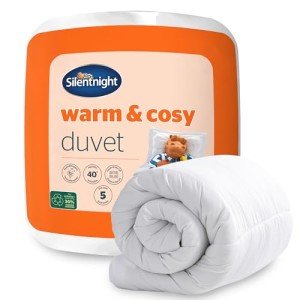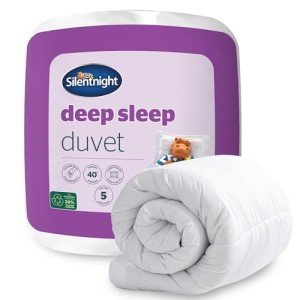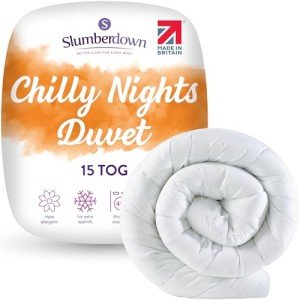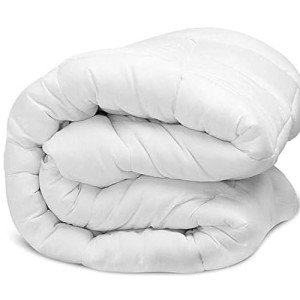As the chill of winter sets in, the quest for warmth and comfort in the bedroom becomes a priority for many. The right duvet can significantly influence the quality of sleep during the colder months. This is where the extra warm double duvet comes into play. With its plush materials and insulating properties, an extra warm double duvet can transform a cold bedroom into a cozy haven.
Understanding Duvets
A duvet, also known as a continental quilt or comforter, is a type of bedding filled with insulating materials designed to provide warmth. Unlike traditional blankets, duvets are often stuffed with filling materials such as down feathers, synthetic fibers, or wool, and covered with a fabric shell.
Types of Duvet Filling
-
Down: Made from the soft, fluffy undercoating of ducks or geese. Down duvets are highly breathable, lightweight, and provide exceptional warmth.
-
Feather: Comprising larger and heavier quills from birds, feather duvets are more affordable than down but tend to be denser and heavier.
-
Synthetic: Usually made from polyester, synthetic duvets are hypoallergenic and can mimic the loft and warmth of down. They are also machine washable, making them easy to care for.
-
Wool: Known for its moisture-wicking properties, wool duvets can regulate temperature, keeping sleepers warm in winter and cool in summer.
Advantages of an Extra Warm Double Duvet
When considering bedding for winter, opting for an extra warm double duvet presents several benefits:
1. Enhanced Warmth
- Extra warm double duvets are specifically designed to provide superior insulation, ensuring a snug and warm night’s sleep, even in the coldest of conditions.
2. Versatility
- They can be used on their own or with a duvet cover, allowing for style flexibility without compromising on warmth.
3. Comfort
- The plush filling appeals to those who appreciate a soft and cozy feel, making it easier to drift off to sleep.
4. Durability
- Quality materials and construction ensure that an extra warm double duvet can withstand the rigors of frequent use and washing, maintaining its warmth and fluffiness over time.
5. Allergy-Friendly Options
- Many synthetic and wool options are hypoallergenic, which is particularly beneficial for individuals with allergies or sensitivities.
6. Easy Maintenance
- Most extra warm duvet covers are machine washable, making it simple to keep them fresh and clean throughout the winter months.
Factors to Consider When Choosing an Extra Warm Double Duvet
When selecting an extra warm double duvet, there are several factors to take into account:
1. Tog Rating
The tog rating measures a duvet's thermal insulation. A higher tog means a warmer duvet. For winter use, a tog rating between 10.5 and 13.5 is ideal.
2. Size
A double duvet typically measures 200cm x 200cm. It's vital to ensure that the duvet fits the bed correctly.
3. Material
Choose the filling material based on personal preferences for warmth, weight, and any allergies. Down is warm and lightweight, while wool is breathable and moisture-wicking.
4. Budget
Extra warm double duvets come in a range of prices. Determine a budget based on personal requirements and willingness to invest.
5. Care Instructions
Review the care instructions to ensure the duvet is compatible with a busy lifestyle. Some materials may require special care.
How to Maintain Your Extra Warm Double Duvet
To prolong the life and performance of an extra warm double duvet, regular maintenance is essential. Here are some key tips:
-
Use a Duvet Cover: A duvet cover can protect the duvet from dirt and stains, reducing the need for frequent washing.
-
Air Out Regularly: On warmer days, air out the duvet to maintain freshness and fluffiness.
-
Wash Properly: Follow the care instructions regarding washing and drying. While many are machine washable, using a large capacity commercial washer can help if the duvet is bulky.
-
Store Correctly: During warmer months, store your duvet in a breathable cotton bag in a cool, dry place to prevent mildew.
FAQs
1. What is the best filling for a winter duvet?
Answer: Down and wool fillings are typically regarded as the best for warmth in winter. Down is lightweight and fluffy, while wool offers excellent temperature regulation.
2. How do I know what tog rating I need?
Answer: For winter, a tog rating between 10.5 and 13.5 is recommended to ensure optimal warmth.
3. Can I wash my duvet at home?
Answer: Many modern duvets are machine washable. Always check the care label for specific washing instructions to maintain the quality of the duvet.
4. What’s the difference between a duvet and a comforter?
Answer: Duvets are typically used with a cover, while comforters are usually standalone bedding. Duvets are generally thinner and filled with soft materials, while comforters are often plush and thicker.
5. How often should duvets be cleaned?
Answer: Duvets should be cleaned at least once a year, although using a duvet cover can extend the time between washes.
An extra warm double duvet offers a perfect solution for staying comfortable and cozy during the winter months. By understanding the different types of fillings, tog ratings, and maintenance needs, consumers can make informed decisions that enhance their winter sleep experience. Investing in a quality duvet not only improves sleep quality but also adds a touch of luxury and warmth to any bedroom. Embrace the season with the right bedding, and enjoy the restful nights that follow.






